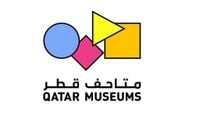Qatar Museums has announced an exciting cultural collaboration with the Palace Museum in Hong Kong, unveiling the "Wonders of Imperial Carpets" exhibition, set to open on June 18 and run until October 6, 2025. This remarkable showcase will be the first of its kind in Hong Kong, exploring the rich artistic and cultural exchanges between Islamic and Chinese civilizations.
The exhibition features nearly 100 exquisite pieces, including textiles from the Mughal, Ottoman, and Safavid empires, alongside ceramics, manuscripts, and metalwork. It aims to highlight the dynamic cultural ties that have evolved through diplomacy, migration, and trade over the centuries.
Sheikha Nasser Al-Nasser, Director of the Museum of Islamic Art, expressed her enthusiasm for the collaboration, stating, "We are honored to partner with the Palace Museum in Hong Kong to showcase these magnificent treasures from our collections to a new audience. The 'Wonders of Imperial Carpets' exhibition not only highlights the exceptional artistic craftsmanship of the Safavid, Mughal, and Ottoman dynasties but also emphasizes the strong connections that have linked Islamic and Chinese cultures over the centuries. This collaboration is a true reflection of the enduring dialogues between our regions and represents an important legacy of the Cultural Years initiative."
Dr. Lewis Inga, Director of the Palace Museum in Hong Kong, added, "The 'Wonders of Imperial Carpets' exhibition marks the first time such exhibitions have been held outside Qatar. It embodies a new understanding of artistic evaluation, enriched by a unique narrative of cultural exchange between China and the Islamic world. This approach underscores the Palace Museum's commitment to fostering dialogue between civilizations, as the Islamic world extends through various historical stages from the Mediterranean west to Southeast Asia and beyond. Its art and culture continue to inspire communities and cultures worldwide today."
Structured into four sections, the exhibition not only explores the production of imperial carpets in Safavid Iran, Mughal India, and Ottoman Turkey but also highlights the deep interconnections between different forms of Islamic art, from ceramics and metalwork to miniature painting and bookbinding. It presents some of the most famous masterpieces from the Museum of Islamic Art's collection, many of which will be displayed outside Qatar for the first time.
This exhibition offers visitors a unique opportunity to explore the richness and craftsmanship of Islamic art through its most remarkable displays. Carpets represent one of the largest and most prestigious forms of Islamic artistic expression. The "Wonders of Imperial Carpets" exhibition stands as a significant milestone reflecting Qatar Museums' ongoing commitment to cultural exchange and international collaboration. Through these partnerships, Qatar Museums continues to share the richness of its collections with a global audience, enhancing appreciation for Islamic art and heritage worldwide.
Additionally, the exhibition is part of the "Cultural Seasons" initiative, a year-long program that establishes cooperative projects between Qatar and partner countries, aiming to enhance mutual respect and understanding through building long-lasting cultural, social, and economic ties. It also represents a major achievement following a memorandum of understanding signed between the Palace Museum in Hong Kong and Qatar Museums during the first-ever International Cultural Summit held in Hong Kong last year.
In another significant cultural effort, the Egyptian Museum in Tahrir and the National Museum of Egyptian Civilization participated for the first time in the 14th International Hong Kong International Licensing Show (HKILS), held in Hong Kong. This event showcased over 330 exhibitors from around the globe at the Hong Kong Convention and Exhibition Centre.
The Egyptian participation aimed to promote cultural tourism and enhance museum resources by displaying trade trademarks for the Egyptian archaeological sector. The museums featured dedicated booths showcasing large posters of their most important artifacts, equipped with interactive QR codes that allowed visitors to access detailed digital information, providing an innovative promotional tool throughout the exhibition.
Dr. Ali Abdel Halim Ali, General Manager of the Egyptian Museum in Tahrir, and Dr. Nashwa Gaber, Deputy Director of Archaeological Affairs at the National Museum of Egyptian Civilization, participated in a main session titled, "Leveraging the Eternal Charm of Ancient Egypt: Licensing Opportunities with Museums." They discussed the most licensable artifacts and how to transform archaeological models into high-quality souvenir products that promote the museums and enhance economic returns from Egyptian heritage.
The speakers emphasized the importance of this type of licensing in stimulating innovation and creating sustainable partnerships between museums and the private sector, thereby enhancing marketing opportunities for Egyptian cultural heritage on the international stage. They also highlighted the reciprocal relationship between commercial licensing and cultural tourism, noting that cultural products inspired by artifacts attract new visitor demographics and deepen their connection to Egyptian civilization.
Marguerite Fong, Executive Director of the Hong Kong Trade Development Council, praised the Egyptian participation, stating in her opening remarks that this year's exhibition highlights the heritage of China and Egypt as two of the oldest human civilizations. She emphasized the potential of cultural intellectual property to build new relationships and provide valuable contemporary cultural experiences.
The Egyptian participation involved close coordination between the Ministry of Tourism and Antiquities and the Consulate General of the Arab Republic of Egypt in Hong Kong, which played a pivotal role in preparing for the event, from logistical coordination to supporting the Egyptian delegation until the end of the activities.
Both exhibitions illustrate the growing importance of cultural exchange and collaboration in promoting heritage and fostering international relationships. The events in Hong Kong not only highlight the artistic and historical significance of Islamic and Egyptian cultures but also represent a strategic move towards enhancing cultural tourism and economic opportunities through innovative partnerships.

